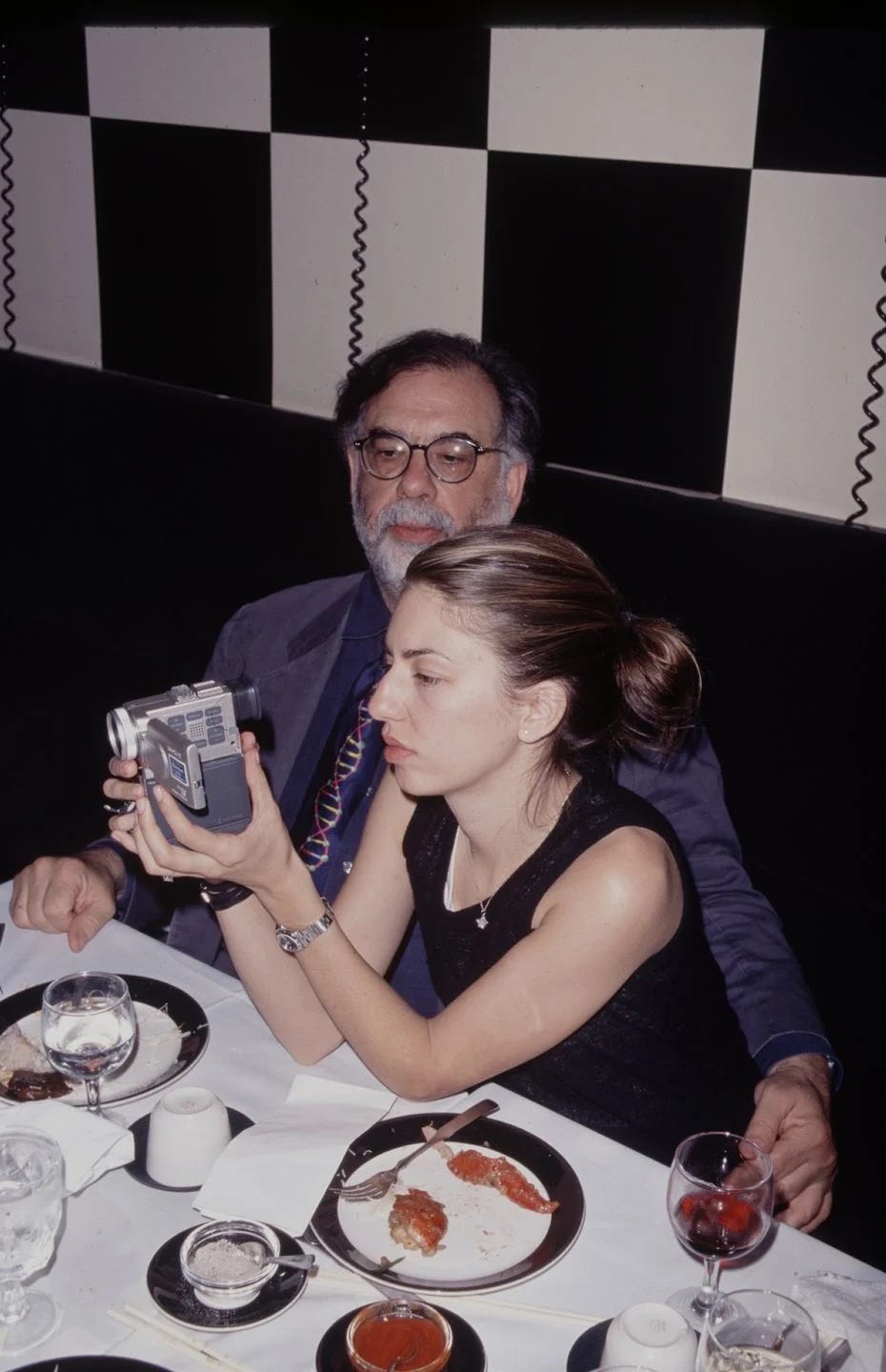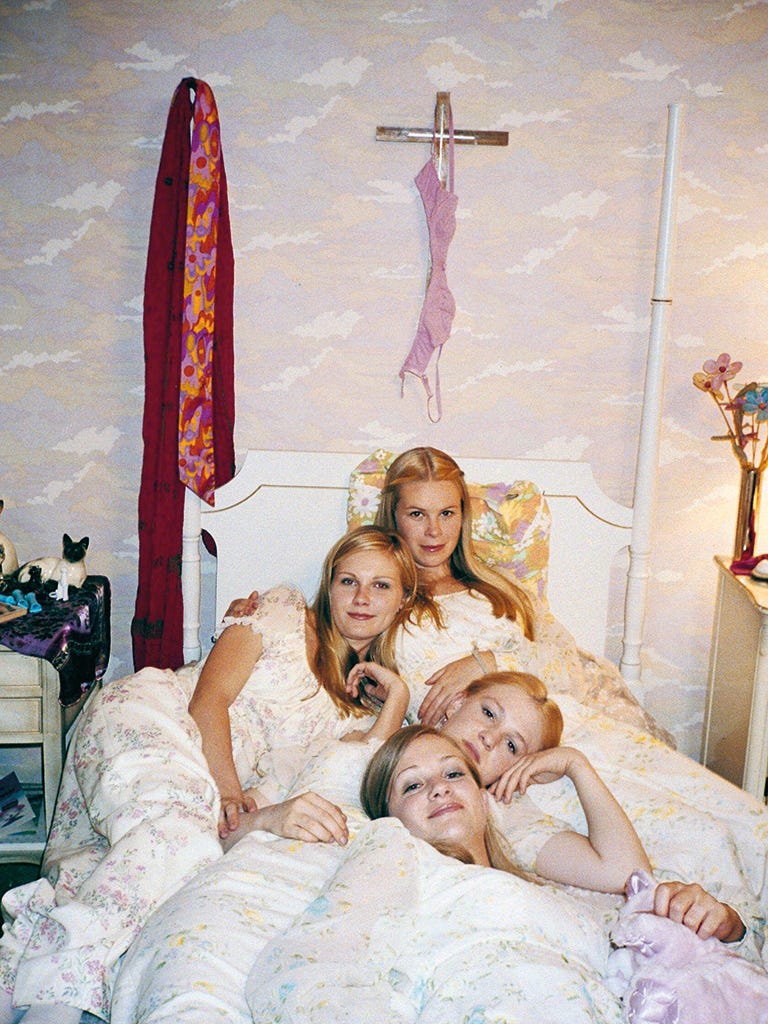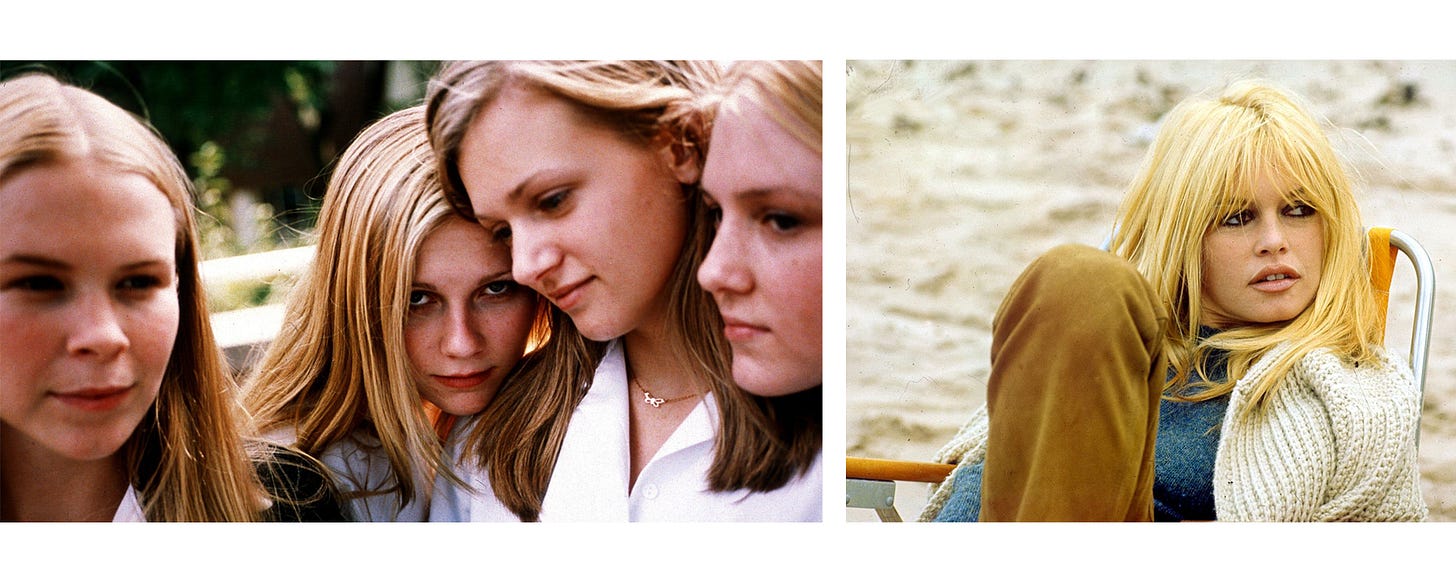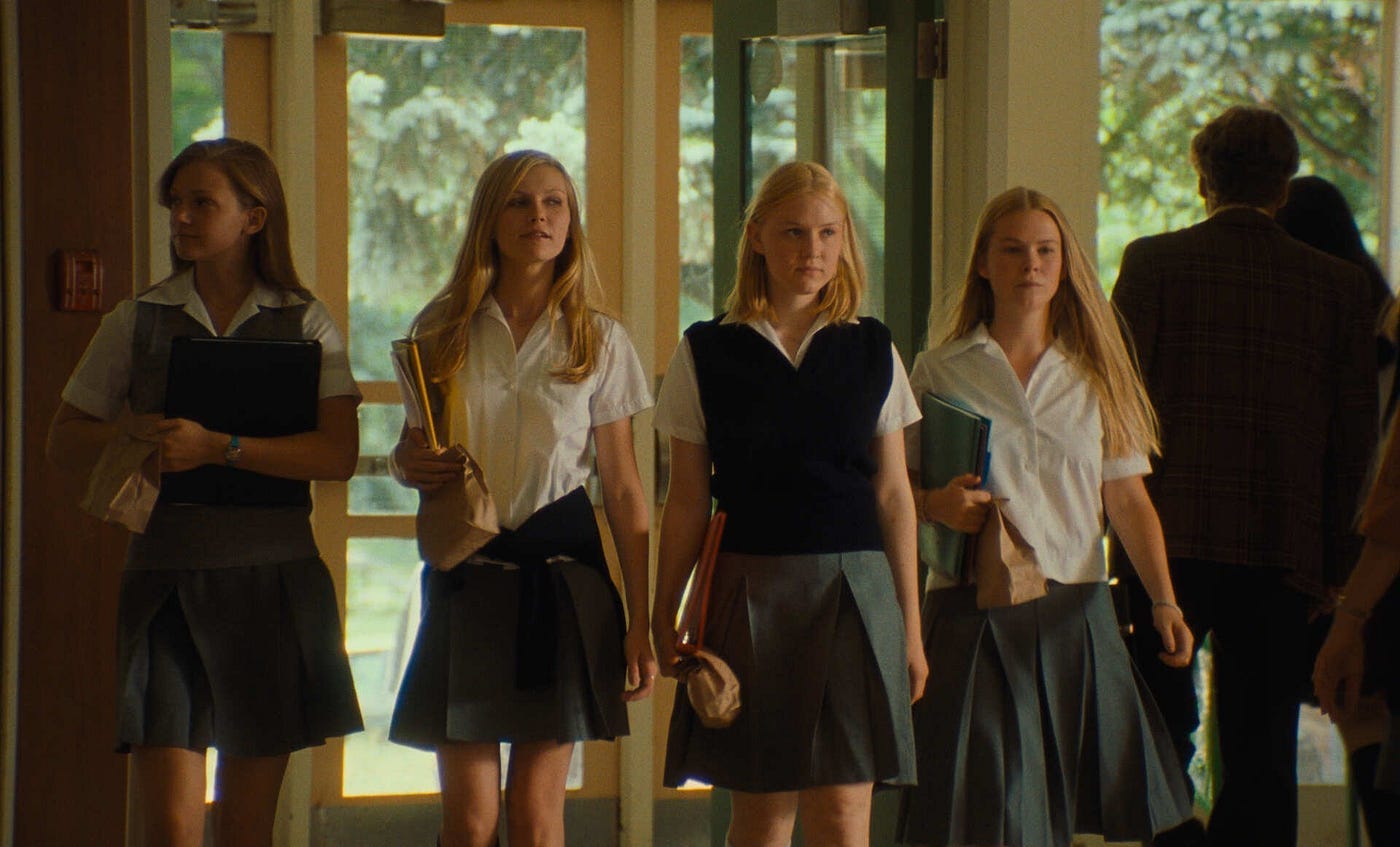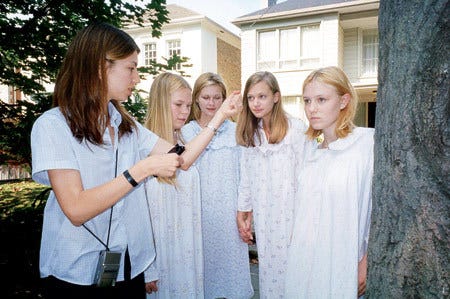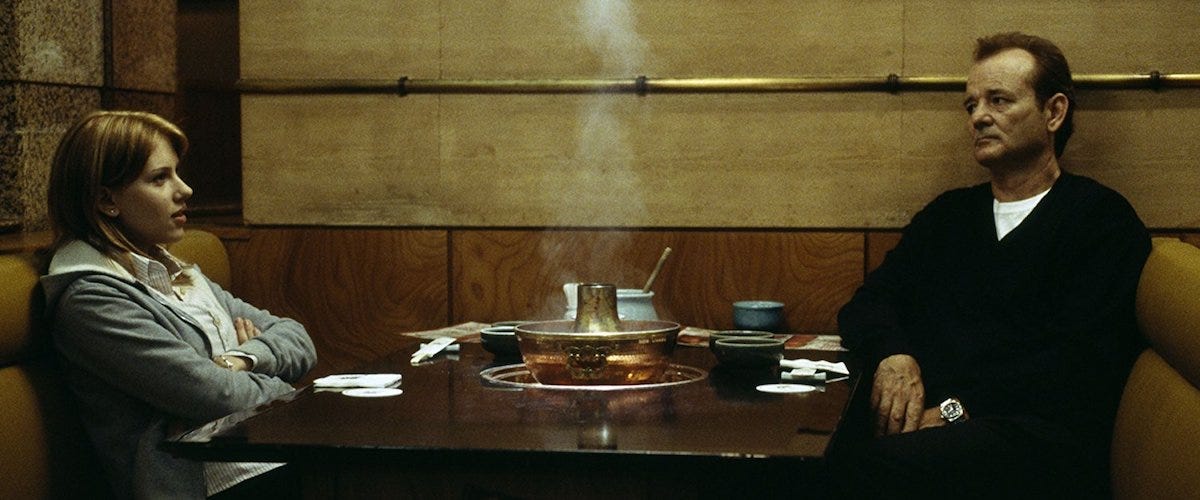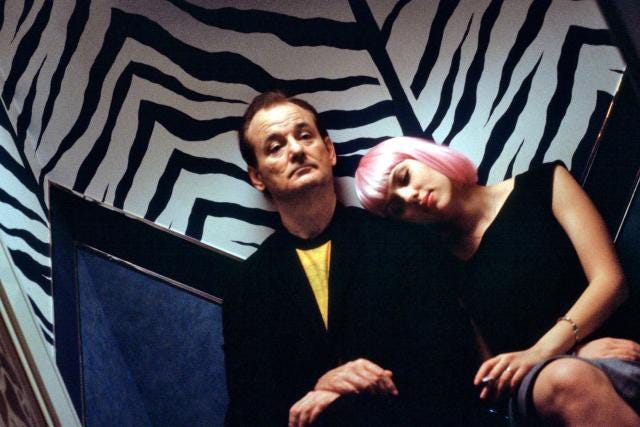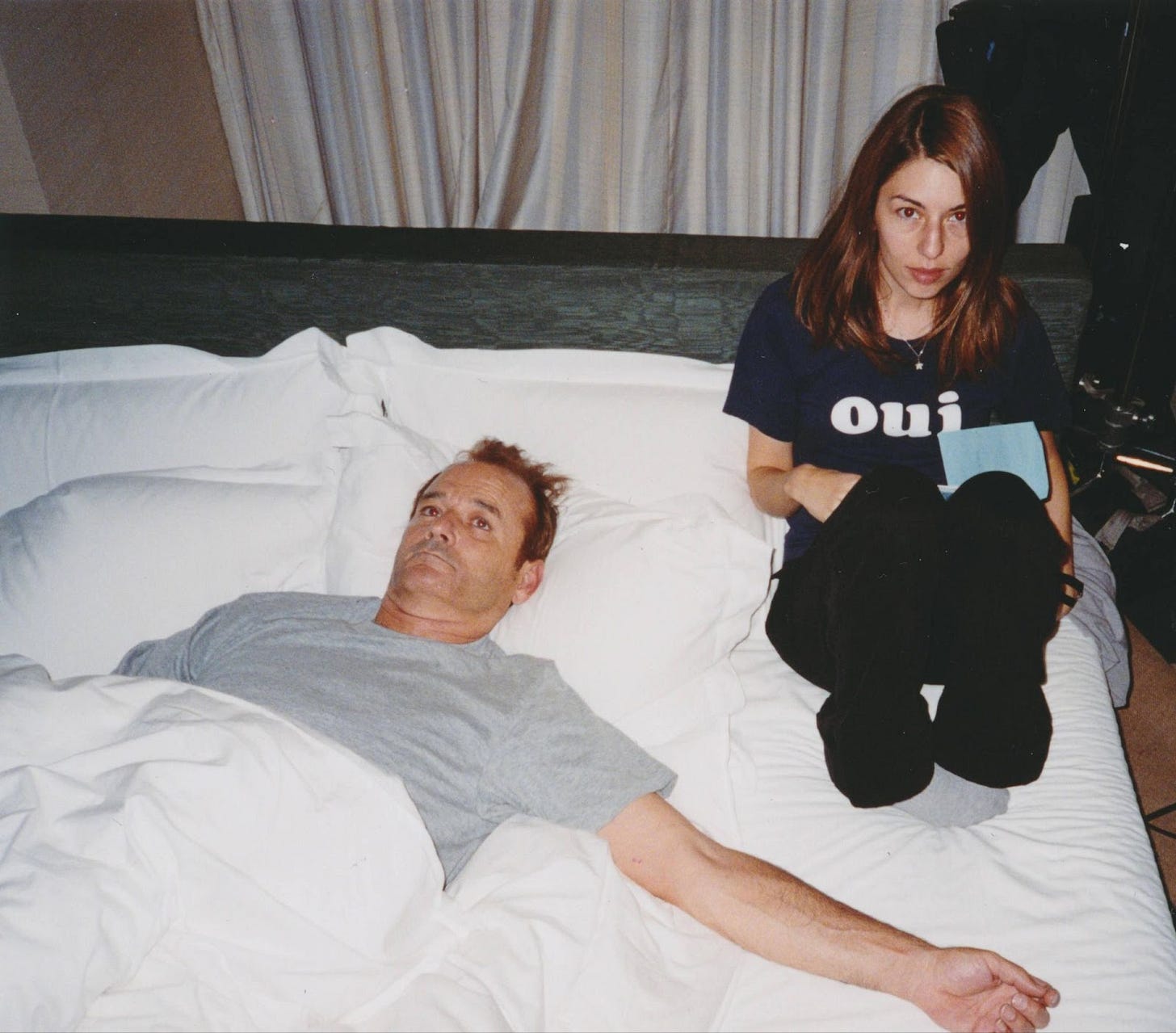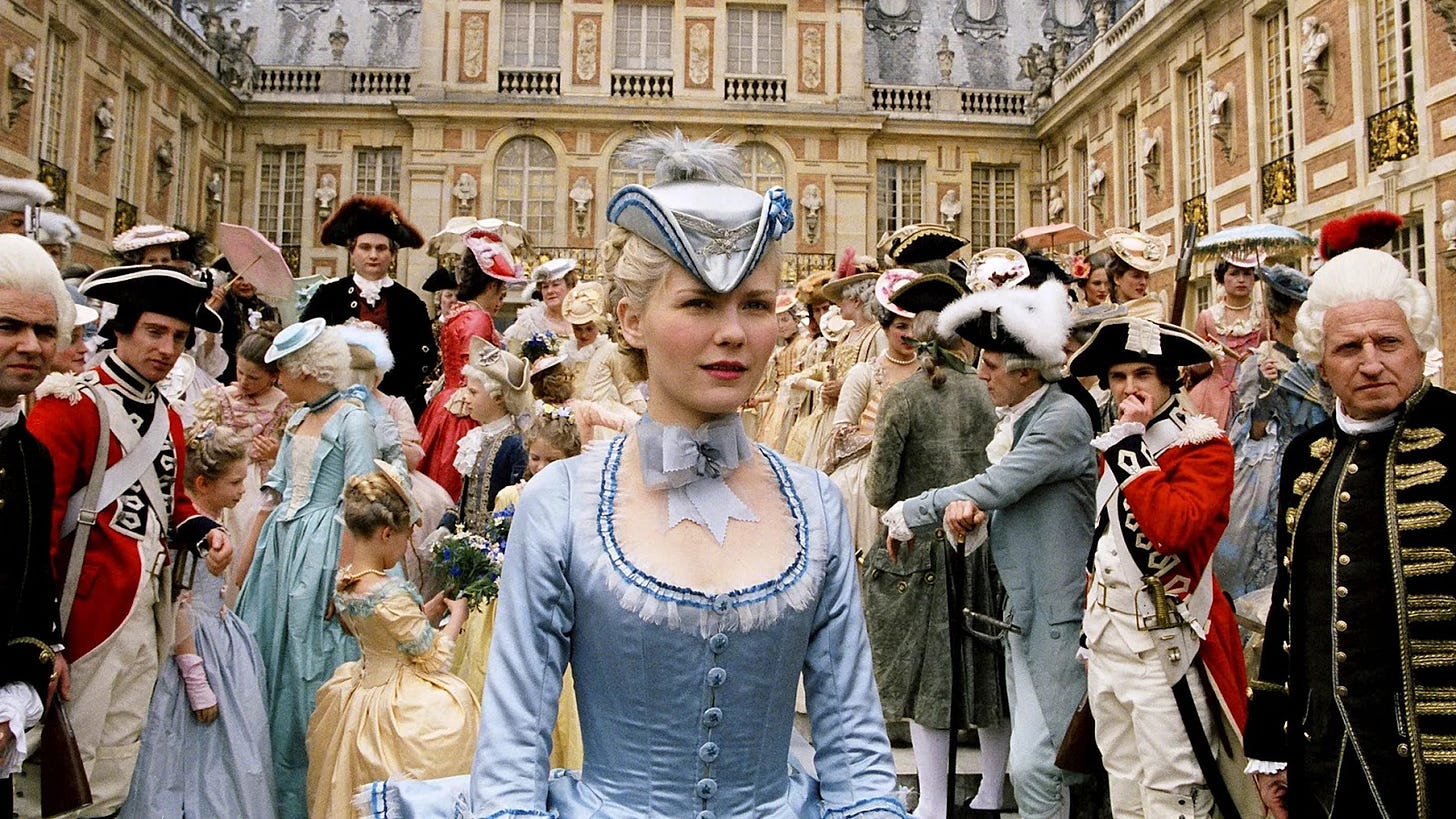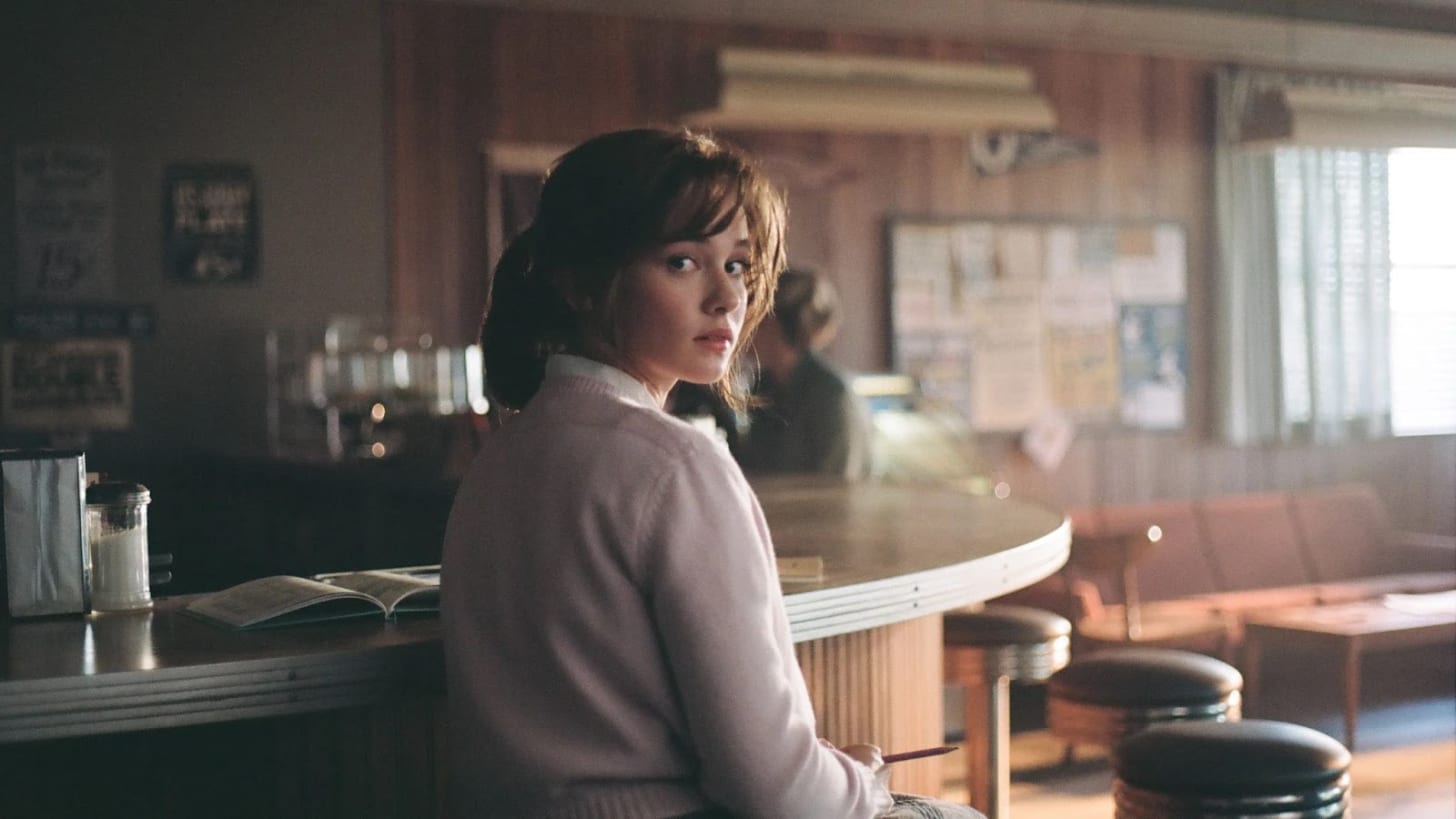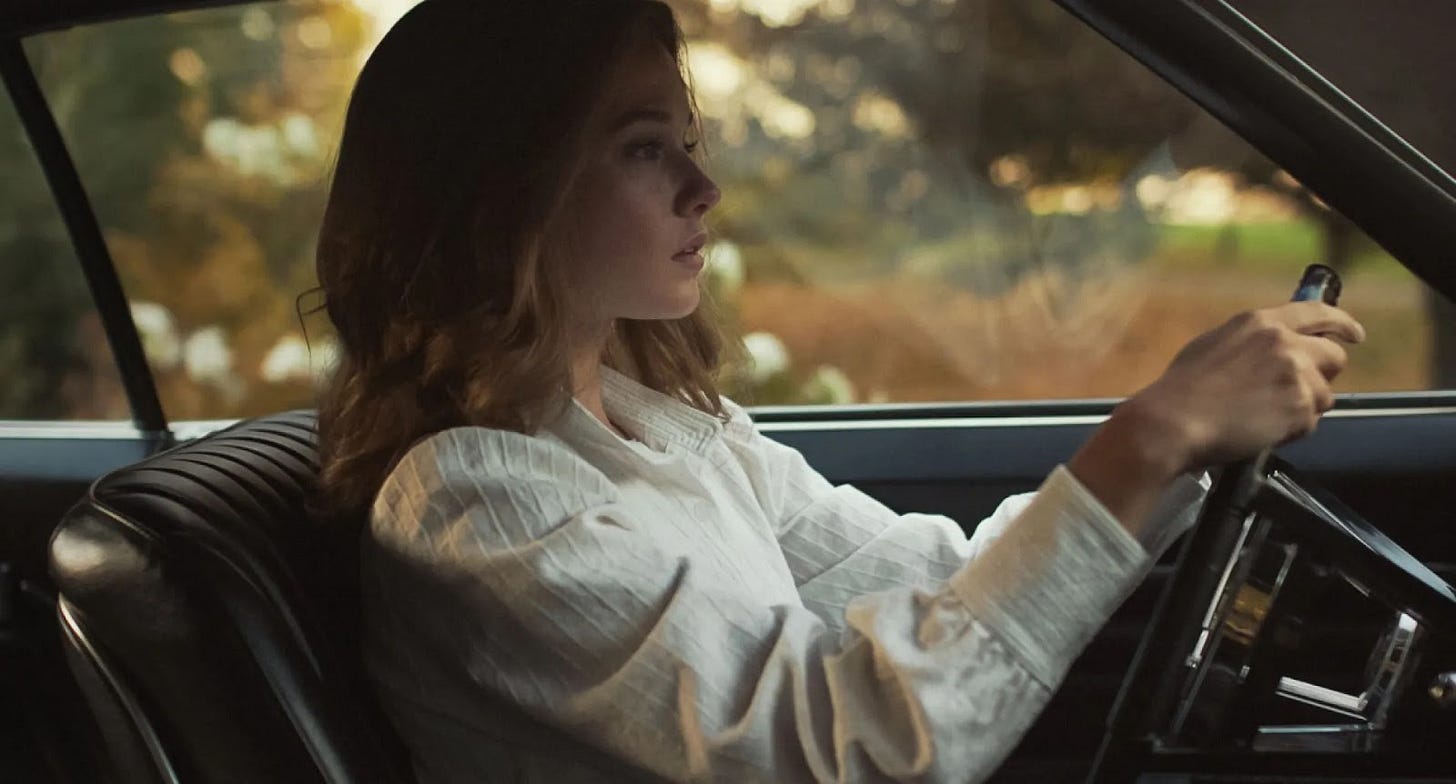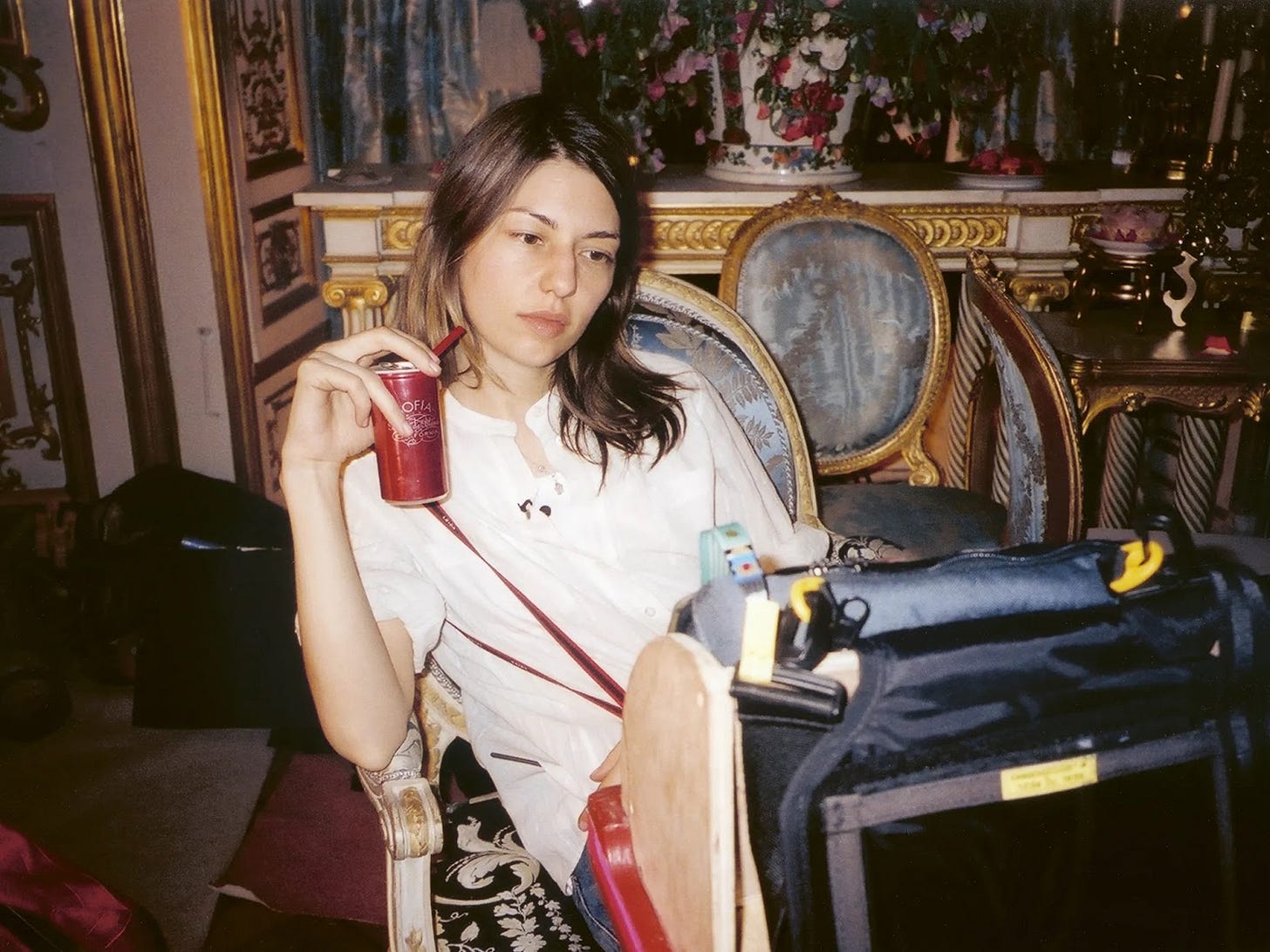Hi Fashion Talk readers! Introducing you today to an engaging debut article penned by one of our talented student writers, Mia Hamilton. In this insightful piece, Mia explores the captivating synergy between fashion and filmmaking, with a special emphasis on the distinctive style of director Sofia Coppola.
Through Mia's thoughtful analysis, she aims to highlight the creative synergy between fashion and cinema, showcasing how these two dynamic worlds intersect and influence each other.
Here at Fashion Talk, we strive to foster open dialogue and critical thinking within our community. “Fashion Touches Everything,” so today we are celebrating the intersection of fashion and filmmaking as vibrant forms of artistic expression.
Happy reading,
Amarissa
Nearly half a year after Sofia Coppola’s latest film Priscilla hit theaters, her signature blend of delicate lace and neat bows continues to leave an indelible mark on the fashion-forward filmmaking landscape.
Playing Priscilla Presley, Cailee Spaeny eloquently describes Coppola’s visionary approach as “sharp” emphasizing her unique ability to visualize the film like a “photograph,” showcasing her certainty in crafting each scene with precision, from the distinctive style to the meaningful moments that define her filmmaking. With a definitive and rich directing style distinct from her father’s, Coppola has cultivated worlds of unique feminine perspectives, highly detailed cinematic sets, and of course, carefully curated costume selections.
Those who enjoy her work remark on their comfortable and oddly familiar aura which is largely unveiled through her character’s outfits, whether they are overly extravagant or simple and nerdy. What some viewers may not realize is how Coppola’s extensive history in the fashion business has naturally infused this effect into her later works.
When Sofia Coppola was only 15 years old, she interned with Chanel in Paris, France. In her discussion with The Globe and Mail, Coppola reflected on the profound impact of observing Karl Lagerfeld at work, stating, “seeing Karl work from sketches… made a big impression… I was inspired by how he was so creative”. This observation has deeply influenced Coppola’s creative process, as she frequently incorporates elements of fashion mood boards and collages when starting a production, building a specific aesthetic for each movie.
Her relationship with Lagerfeld’s fashion house continued to spill over into her projects, as the elegant wedding gown exquisitely worn by Spaeny in Priscilla was designed and custom-produced by Chanel. More notably, Coppola has been known as the muse for Marc Jacobs, with their relationship often described as “one of fashion’s great platonic love stories”.
Marc Jacobs' effortlessly cool and timelessly chic aesthetic made quiet debuts through the wardrobes of characters like Charlotte and Bob in Lost in Translation. Just down the street from one of his shows, Coppola and her then-boyfriend Spike Jonze produced their own fashion show called “X-Girl” on the sidewalks of New York City during the early 90s. The outfits and attitudes showcased by both friends and Ford Agency models provided a glimpse into the signature energy imbued within her cinematic pictures.
One of fashion's most beautiful qualities lies in its power to convey our identity to the world even before we open our mouths. The way we dress reflects a deeper, intimate version of ourselves and this notion is one Coppola has understood and mastered for years. Her understanding of clothing’s power weaves through each of her films, some less obvious than the ornately decorated world of Marie Antoinette, yet present nonetheless. To truly understand the surreal and grandiose atmospheres created by Sofia Coppola, let’s take a further look into a few of the director’s sophisticated archives.
The Virgin Suicides, 1999
Sofia Coppola’s first project, The Virgin Suicides, presents a dreamlike interpretation of what it means to grow up as a girl. Nancy Steiner, the costume designer for both this film and Coppola’s subsequent work, Lost In Translation, revealed in an interview with The Criterion Collection that she and Coppola “looked at lot of rather cinematic photographers'' and “images of people from the sixties and seventies, like Brigitte Bardot… as a frame of reference” for the five Lisbon sisters’ wardrobes.
Following the sisters’ lives under the dictation of their Catholic parents, the film is soaked in fragile nostalgia: floral dresses, boxy cuts and hazy shades of rose and blue. From the narration of boys living across the street, we discern that the Lisbon sisters are entrapped not only by the adults who chart their lives but also by the simple fact that they are girls. This sense of “imprisonment”, as written in their diaries, undeniably rings within their 70s-inspired fashion choices.
Throughout the film, the sister’s overbearing mother controls every piece of clothing they wear, frequently dressing them in embarrassingly young clothing, such as the matching “nighties” they sleep in. When the sisters attend homecoming, their white dresses with puffed sleeves and soft flowers are described as “four identical sacks” by their dates. The long dresses, with one inch added to the bust line and two inches to the waist and hem, still evoke feelings of endless romance, nearly insulting their mother’s attempts at a covered style. At school, the classic uniforms of gray pleated skirts, black sweater vests and white button ups brush across the screen, continuing to echo their issues of indistinguishability.
Dusty floral decals and vintage pinks emphasize the pervasive sense of dread that coats this film, as the girls fight and eventually lose the battle to the forces of authority. With enforced conformity paired with constant remarks of being told to cover up, Coppola masterfully captures society's stifling constraints against surfacing senses of sexuality through the faded closets of the Lisbon sisters.
Lost In Translation, 2003
Despite the glamorous backdrop of dreamy Tokyo lights, the fashion depicted in Lost in Translation captivates the audience in a much quieter way. The opening scene introduces Charlotte with a shot of her pink sheer underwear, which may be the most interesting piece we see on the young Yale graduate. Her intellectual personality is reflected in her attire of crinkly white button-ups, large trousers and dark sweaters. When she meets the washed-up movie star Bob in the hotel bar, his clothing similarly mirrors hers, characterized by minimal color and plain styles.
Both facing existential issues relating to their careers and marriage, Bob and Charlotte’s strange and platonic relationship slowly develops through their wardrobes. Before going out, she flips Bob’s horrid yellow and orange camouflage shirt inside out. Later, she’s seen wearing his jacket as they walk in the dazzling city streets. Perhaps subconsciously they begin to care for each other, noticing how the other presents themselves, how they may feel.
In the film’s most renowned scene, Charlotte wears a pink wig, her head gently resting on Bob’s shoulder. No words are spoken as the light shade of pink seems to mock their unspoken desires and the realization of what could have been but what will never be between them. Perhaps their dim and moody clothing reflects this sense of hopelessness, dwelling on the heartbreaking fact that once they leave the city their friendship will soon dissolve back into that of strangers. Or maybe, Coppola was saving up for the bombshell costume design in her next film.
Marie Antoinette, 2006
Taking after the rebellious spirit of the character she crafts, Coppola approached the story of Marie Antoinette with a similar defiance and, to some critics’ disapproval, decided to “tell the story in my own way”, she described in an interview.
Winning an Academy Award for Best Costume Design, Marie Antoinette dives deep into girlhood, expressing its isolating, confusing, and muddy intensities through a teenage version of the queen. Her intense emotions are intricately woven into layers of ruffles and heels, twisting historic outfits with 21st century adolescence.
The film drenches the audience in lace, pastels, and feathers, with enough bows to make your head fall off. Costume designer Milena Canonero recalls how Coppola handed her “a box of pastel-colored macaroons” while telling her how much she loved their colors. Canonero used them as a palette for the film, allowing these hues to highlight Antoinette’s isolation; in one scene she even appears to melt into the palace walls as one stretching print of flowers.
As her wardrobe evolves so does she, eventually having to leave behind the parties and champagne. When first arriving at Versailles her dresses are pale yellows and blues, reflecting her youth and innocence. During her wild years this progresses into brighter pinks, until finally, as the film dwindles down to its last minutes, so has Antoinette’s desire for the superficial. Her gowns fall into darker tones, her hair growing disheveled.
Occasionally, Antoinette’s costumes felt like their own character, with the flowing dresses and towering wigs acting as supporting roles, almost stealing the show. At one point, her hair is dyed pale pink, a potential nod to Charlotte’s wig, indicating her resistance to maturity. Hints of the sensational Marie Antoinette can be felt throughout Coppola’s most recent piece, again focusing on a lead whose clothing choices sometimes speak louder than she does.
Priscilla, 2023
Stating flatly in one interview, Coppola once said, “I am not really dialogue-driven… I express as much as I can in the visuals”. Priscilla is certainly no exception to this statement, as the future icon begins to fall in love with Elvis by means of pastel pink cardigans and fuzzy sweaters. First meeting in Germany, the rather notorious age gap between the two shows through Priscilla’s simple side ponytail and eyes yet to be coated in winged eyeliner.
The relationship between Elvis and Priscilla deviates from the glamorous façade presented to the public at the time, a stark reality that becomes painfully evident when they go shopping. With each dress Priscilla tries on, she’s met with definitive responses such as “blue is your color,” dismissing any disagreements or differing opinions she may have.
When it came to the Presley wedding scene, Coppola once more infused a historic moment with modernity, using Priscilla’s original gown as a foundation to build upon, finishing the look with current hints of Chanel style. As their marriage progresses, Priscilla’s individuality seems to fade into Elvis’ shadow as she conforms to his preferences, adopting the colors he prefers and dyeing her hair to his liking. Even during labor, she nervously applies fake lashes before heading to the hospital, symbolizing her ongoing efforts to maintain the image he desires.

Perhaps getting back in touch with her younger true self, after the wedding Priscilla’s hair gradually deflates and her styles becoming relaxed and simpler. When she finally tells Elvis she’s leaving him, she sits in a crisp white button up, comically contrasting his striped pajamas. A liberating moment, Priscilla exits the Presley estate with her natural brown hair cut to the shortest we’ve seen it, her existence completely free of influence.
Each of these films center around the complexity of girlhood by the hands of lonely and soft spoken female leads, giving fashion more lines than the stars themselves. The characters’ innermost thoughts and emotions are expressed through fabrics, cuts, and colors, leading us to feel like we may know more about them than they do, as though we are invading a make-believe space. We are never told Charlotte might love Bob, yet one of the only times she wears red is during an intimate scene where they finally fall asleep together. Priscilla doesn’t state her feelings of loneliness, rather she appears in more blues and grays.
Whether you’re a film junkie or shopping addict, watching Coppola’s films with a keen focus on the outfits she selects may lead you to believing her characters really do exist somewhere. Fostering a deeper sense of identity within her roles, her subtle slips of details accumulate into charming masterpieces. With an awareness of Coppola’s ability to harness fashion into an unspoken language, her visuals become more relevant and impossible to ignore. To best understand her aesthetically pleasing styles requires a firsthand experience of Coppola’s takes on femininity, loneliness, and the inevitable reality that one day we’ll need to grow up.
What film director do you believe has the most distinctive fashion-forward approach? Let us know in the comments below!
Final oversight & edits by Amarissa.
On the stage today…
Mia is a participant in Fashion Talk's Winter ‘24 Student Writing Program. Aligned with our mission to uplift young voices in the fashion industry, we’re excited to share her fresh and insightful perspective with our community.
Get to know Mia here.
connect with us: IG → pinterest → twitter → bluesky






